Magnepan MG30.7i (NEW) Reference Speaker

The White Bear Lake, Minnesota-based loudspeaker manufacturer Magnepan never takes the launch of a new flagship model lightly and this is especially true in the case of the recently released four-panel 30.7 dipolar loudspeaker system ($45,000/pair in the US). For readers who have never seen Magnepan loudspeakers in the flesh, it helps to know that they are tall, wide, thin, and completely ‘boxless’ dipolar, panel-type speakers that look much like tasteful room divider screens. I have long used Magnepan speakers in my reference system and – to be candid – visitors who see the ‘Maggies’ for the first time often find it difficult to believe they even are loudspeakers (as in, “Riiight, they’re ‘loudspeakers’ if you say so—now what are they really?”). After a few well-chosen musical tracks, however, disbelief typically turns into the good kind of shock and awe. My point: Magnepans don’t look like typical box speakers and don’t sound like them either.
For more than a decade, Magnepan’s models geared for two-channel applications have used a single, multi-driver speaker panel per channel. In earlier years, however, Magnepan offered top models such as its Tympani-series speakers (culminating in the famous Tympani IVa) that employed three vertically orientated panels per channel. In fact, the largest variant of the Tympani (the Tympani IIIa) used an astonishing total of eight panels (two tweeter/midrange panels on the left, another two on the right, and four bass panels in the middle), which meant that in most rooms it was a literal ‘wall-to-wall’ loudspeaker.
บริษัทผู้ผลิตลำโพง Magnepan จากเมือง White Bear Lake รัฐมินนิโซตา ไม่เคยมองข้ามการเปิดตัวรุ่นเรือธงใหม่ และเหตุการณ์นี้ยิ่งชัดเจนในกรณีของลำโพงระบบ dipolar สี่แผ่น 30.7 ที่เพิ่งเปิดตัว ($45,000/คู่ในสหรัฐอเมริกา) สำหรับผู้อ่านที่ยังไม่เคยเห็นลำโพง Magnepan แบบตัวเป็นๆ ควรรู้ว่าลำโพงเหล่านี้มีขนาดสูง กว้าง และบาง โดยไม่มีกล่อง ลักษณะของมันคล้ายกับหน้าจอแบ่งห้องที่มีดีไซน์สวยงาม ผู้เขียนเองได้ใช้ลำโพง Magnepan ในระบบอ้างอิงมานานและต้องบอกว่า ผู้ที่มาเยี่ยมชมมักไม่เชื่อว่าลำโพงเหล่านี้คือ “ลำโพง” (เช่น “จริงๆ เหรอ? มันคือ ‘ลำโพง’ ถ้าคุณบอกแบบนั้น—แล้วมันคืออะไรจริงๆ?”) อย่างไรก็ตาม หลังจากฟังเพลงที่เลือกอย่างดีแล้ว ความไม่เชื่อมักจะกลายเป็นความประหลาดใจในลักษณะที่ดี
เป็นเวลากว่า 10 ปีแล้วที่รุ่นของ Magnepan ที่ออกแบบสำหรับการใช้งานสองช่องทาง มีการใช้แผ่นลำโพงเดียวที่มีหลายไดรเวอร์ต่อช่องทาง แต่ในปีที่แล้ว Magnepan เคยเสนอรุ่นท็อป เช่น ลำโพงในซีรีย์ Tympani (ซึ่งมีรุ่นที่มีชื่อเสียงอย่าง Tympani IVa) ซึ่งใช้แผ่นเสียงแนวตั้งสามแผ่นต่อช่องทาง ในความเป็นจริง รุ่นที่ใหญ่ที่สุดของ Tympani (Tympani IIIa) ใช้แผ่นเสียงรวม 8 แผ่น (สองแผ่นสำหรับทวีตเตอร์/กลางด้านซ้าย สองแผ่นด้านขวา และสี่แผ่นเบสตรงกลาง) ซึ่งหมายความว่ามันแทบจะเต็มห้องไปด้วยลำโพง

While undeniably legendary in their day, the Tympani models required very careful set-up and equally careful selection of ancillary components in order to sound their best. What is more, they took up so much space that they probably set records for generating spouse acceptance problems (“Look dear, you can’t seriously be planning to put those things in our lounge; not now and not ever.”). Even so, the sound of the late, lamented Tympani’s was so compelling, so realistic, and so unforgettable that enthusiasts have been pestering Magnepan ever since to create a modern-day Tympani equivalent, but updated with 21st century materials and technologies.
แม้ว่า Tympani จะเป็นตำนานในสมัยของมัน แต่การตั้งค่าและการเลือกอุปกรณ์เสริมเพื่อให้มันทำงานได้ดีที่สุดนั้นต้องทำอย่างระมัดระวัง และมันยังใช้พื้นที่มากจนทำให้เกิดปัญหาเรื่องการยอมรับจากคู่สมรส (“ดูสิที่รัก คุณจะไม่วางของพวกนั้นในห้องนั่งเล่นของเราใช่ไหม? ไม่ใช่ตอนนี้และไม่เคยเลย” ) อย่างไรก็ตาม เสียงของ Tympani รุ่นเก่านั้นน่าหลงใหลและน่าจดจำมาก จนทำให้ผู้ที่ชื่นชอบลำโพงรุ่นนี้กดดันให้ Magnepan สร้างลำโพงที่คล้ายคลึงกันในยุคปัจจุบัน ซึ่งใช้วัสดุและเทคโนโลยีในศตวรรษที่ 21

Tympani IVa

This is precisely where the model 30.7 comes in. The 30.7 is by far the highest performance loudspeaker Magnepan has ever made and though it is a large speaker, it seems visually more compact than the original Tympanis. Nevertheless, through extremely space efficient design the 30.7’s manage to offer fully 22% more driver surface area than did the Tympani IVa. Each 30.7 speaker consists of a large bass/lower-midrange panel and a considerably narrower midrange/tweeter panel, where the tweeter/midrange panel is designed to stand beside and a little behind its companion bass panel (this in order to achieve proper time alignment). Like most Magnepan speakers, the 30.7’s are built in mirror-image pairs, thus giving users numerous set-up options through which panels can be positioned to optimise greater imaging focus and specificity, broader and deeper soundstages, or—in the best cases—both.
นี่คือจุดที่รุ่น 30.7 เข้ามามีบทบาท รุ่น 30.7 เป็นลำโพงที่มีประสิทธิภาพสูงสุดที่ Magnepan เคยผลิตมา และแม้ว่าจะมีขนาดใหญ่ แต่ก็มีรูปลักษณ์ที่ดูเป็นกระชับกว่า Tympani รุ่นเดิม อย่างไรก็ตาม ด้วยการออกแบบที่ใช้พื้นที่อย่างมีประสิทธิภาพ รุ่น 30.7 มอบพื้นที่ไดรเวอร์มากกว่ารุ่น Tympani IVa ถึง 22% แต่ละตัวของลำโพง 30.7 ประกอบด้วยแผ่นเบส/กลางล่างขนาดใหญ่และแผ่นกลาง/ทวีตเตอร์ที่ค่อนข้างแคบ แผ่นทวีตเตอร์/กลางถูกออกแบบให้ตั้งอยู่ด้านข้างและอยู่ด้านหลังของแผ่นเบสเล็กน้อย เพื่อให้ได้การจัดเรียงเวลาที่ถูกต้อง เหมือนกับลำโพง Magnepan รุ่นอื่น ๆ รุ่น 30.7 ถูกสร้างเป็นคู่ที่เป็นภาพสะท้อนกัน ทำให้ผู้ใช้มีตัวเลือกในการตั้งค่ามากมาย สำหรับการจัดตำแหน่งแผ่นลำโพงเพื่อเพิ่มความชัดเจนของเสียง การสร้างฉากเสียงที่กว้างและลึก หรือในกรณีที่ดีที่สุด คือทั้งสองอย่าง
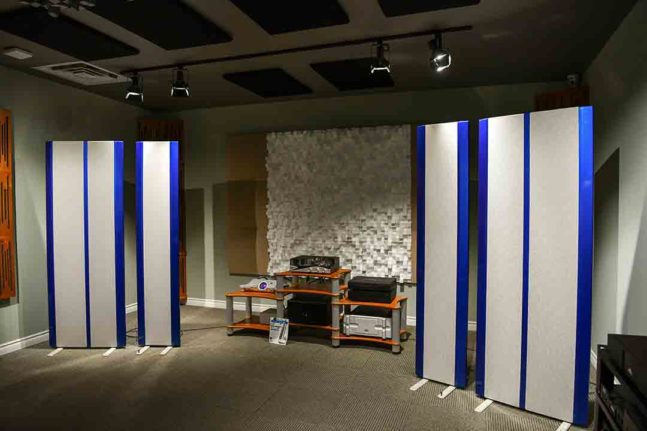
The 30.7 model is so new that Magnepan has not yet published the new model’s manual nor finalised its specifications, but through discussions with Wendell Diller, Magnepan’s head of Marketing and Sales. I was able to learn much about the design. The 30.7’s large bass/lower-midrange panel, says Diller, is the same size as Magnepan’s 20.7 loudspeaker (that is, 79 × 29 × 2.062 inches or 200.7 × 73.7 × 5.2 cm—H×W×D). The tweeter/midrange panel, in turn, is the same height and depth as the bass/lower-midrange panel, but a bit more half the width (it is 16 inches or 36.8 cm wide).

Importantly, the 30.7 is Magnepan’s first-ever four-way speaker. The woofer/lower-midrange panel uses two differently sized rectangular ribbon-type planar bass drivers—an arrangement that means the two bass drivers have different diaphragm resonances thus yielding a smoother response curve overall. The smaller bass driver features—along its outward facing side—an also rectangular quasi-ribbon-type “transitional line-source driver” that covers lower midrange frequencies. Interestingly, the smaller bass driver and the lower-midrange line-source driver share a common diaphragm membrane, but use entirely separate voice coils, each optimised for its assigned frequency range. The drivers in the bass/lower-midrange panel use front and rear magnet arrays, just as do the drivers in the 20.7 loudspeaker—a design touch said to increase efficiency while minimising distortion.
สิ่งที่สำคัญคือ รุ่น 30.7 เป็นลำโพงแบบสี่ทางรุ่นแรกของ Magnepan แผ่นเบส/กลางล่างใช้ไดรเวอร์เบสแบบ Ribbon แบบสี่เหลี่ยมที่มีขนาดแตกต่างกันสองตัว แผนการนี้หมายความว่าไดรเวอร์เบสสองตัวจะมีความถี่เรโซแนนซ์ของไดอะแฟรมที่แตกต่างกัน จึงทำให้ได้โค้งปฏิกิริยาที่ราบเรียบมากขึ้น โดยไดรเวอร์เบสขนาดเล็กจะมี “ไดรเวอร์แบบ transitional line-source” ที่ค่อนข้างแบนซึ่งครอบคลุมความถี่กลางต่ำอยู่ที่ด้านข้างที่หันออกไป น่าสนใจว่าไดรเวอร์เบสขนาดเล็กและไดรเวอร์กลางต่ำใช้ไดอะแฟรมที่เป็นหนึ่งเดียวกัน แต่ใช้ขดลวดเสียงแยกออกจากกันโดยสิ้นเชิงแต่ละตัวได้รับการปรับแต่งให้เหมาะสมกับช่วงความถี่ที่ได้รับมอบหมาย ไดรเวอร์ในแผ่นเบส/กลางล่างใช้ระบบแม่เหล็กด้านหน้าและด้านหลัง เช่นเดียวกับไดรเวอร์ในลำโพง 20.7 ซึ่งการออกแบบนี้ได้เพิ่มประสิทธิภาพในขณะที่ลดความผิดเพี้ยนเสียง

The tweeter/midrange panel features Magnepan’s signature pure-ribbon linear tweeter widely regarded as one of the finest high frequency transducers in the world. The tweeter is positioned alongside a tall and relatively narrow ribbon-type planar midrange driver that introduces an all-new, proprietary, and ultra-low mass diaphragm material, which Diller says helps to make this by far the fastest and most responsive midrange driver Magnepan has ever produced. The midrange driver, like the other quasi-ribbon drivers in the speaker, uses front and rear magnet arrays. First order (6dB per octave) crossover networks are used throughout, with part of the network built into the bottom of the bass/lower-midrange panel and part built into the bottom of the midrange/tweeter panel.
By dividing its workload between four groups of drivers—a set of two planar woofers, a transitional line source lower-midrange driver, an extremely low-mass midrange driver, and a pure ribbon tweeter—the 30.7 aims, says Diller, to provide “lower mass (vs. frequency), better power response, and better bass” than any previous Magnepan design. It is also the most adjustable Magnepan ever, in that it allows separate adjustment of lower-midrange, midrange, and tweeter driver output levels and also positioning adjustments between the bass/lower-midrange panel and the midrange/tweeter panel. The good news is that the 30.7 can be made to work well in a surprisingly large variety of rooms (and to fit a broad range of listener tastes), but please note that it may take a significant time, patience, and experimentation to achieve optimal sonic results. For this reason, Magnepan requires all dealers wishing to sell the 30.7 to commit to providing the painstaking set-up and adjustment services the speaker needs and deserves.
แผ่นทวีตเตอร์/กลางของรุ่น 30.7 มาพร้อมกับทวีตเตอร์แบบ Pure Ribbon ที่ถือเป็นเอกลักษณ์ของ Magnepan ซึ่งได้รับการยกย่องว่าเป็นหนึ่งในตัวส่งสัญญาณความถี่สูงที่ดีที่สุดในโลก ทวีตเตอร์จะตั้งอยู่ข้างกับไดรเวอร์กลางแบบ Ribbon ที่มีขนาดสูงและแคบ ซึ่งมีการใช้วัสดุไดอะแฟรมที่เป็น proprietary ใหม่ล่าสุดที่มีมวลเบามาก ซึ่งตามที่ Diller กล่าว วัสดุดังกล่าวช่วยทำให้ไดรเวอร์กลางนี้เป็นไดรเวอร์ที่เร็วที่สุดและตอบสนองได้ดีที่สุดที่ Magnepan เคยผลิตมา ไดรเวอร์กลางนี้เหมือนกับไดรเวอร์แบบ Quasi-Ribbon อื่นๆ ในลำโพง ใช้ระบบแม่เหล็กทั้งด้านหน้าและด้านหลัง
ลำโพง 30.7 ใช้เครือข่ายครอสโอเวอร์แบบลำดับแรก (6dB ต่อออคเทฟ) ทั่วทั้งระบบ โดยเครือข่ายส่วนหนึ่งถูกสร้างเข้าไปที่ด้านล่างของแผ่นเบส/กลางล่าง และอีกส่วนหนึ่งถูกสร้างเข้าไปที่ด้านล่างของแผ่นกลาง/ทวีตเตอร์
โดยการแบ่งงานให้กับกลุ่มไดรเวอร์สี่กลุ่ม ได้แก่ ไดรเวอร์เบสแบบ planar สองตัว, ไดรเวอร์กลางต่ำแบบ transitional line source, ไดรเวอร์กลางที่มีมวลเบามาก และทวีตเตอร์แบบ Pure Ribbon รุ่น 30.7 มีเป้าหมายที่จะให้ “มวลต่ำ (เมื่อเปรียบเทียบกับความถี่), การตอบสนองกำลังที่ดีขึ้น, และเบสที่ดีกว่า” เมื่อเปรียบเทียบกับการออกแบบ Magnepan รุ่นก่อนๆ นอกจากนี้ รุ่น 30.7 ยังเป็นลำโพงที่ปรับแต่งได้มากที่สุดที่ Magnepan เคยสร้างขึ้น โดยให้ความสามารถในการปรับระดับเอาต์พุตของไดรเวอร์กลางต่ำ, ไดรเวอร์กลาง, และทวีตเตอร์แยกจากกัน รวมถึงการปรับตำแหน่งระหว่างแผ่นเบส/กลางล่างและแผ่นกลาง/ทวีตเตอร์
ข่าวดีคือ รุ่น 30.7 สามารถทำงานได้ดีในหลากหลายประเภทของห้อง (และตอบสนองต่อความชอบของผู้ฟังที่หลากหลาย) แต่โปรดทราบว่าการทำให้ได้ผลลัพธ์เสียงที่ดีที่สุดอาจต้องใช้เวลา ความอดทน และการทดลองมากมาย ด้วยเหตุนี้ Magnepan จึงให้ผู้ขายทั้งหมดที่ต้องการจำหน่ายรุ่น 30.7 มุ่งมั่นที่จะให้บริการตั้งค่าและปรับแต่งที่ละเอียดถี่ถ้วนซึ่งลำโพงนี้ต้องการและสมควรได้รับ

What I hope to provide here is not so much a definitive loudspeaker review of the 30.7, but rather a preliminary assessment of its performance potential. With this goal in mind, I accepted an invitation from Magnepan to audition the speaker in the firm’s Minnesota-based sound room/development lab. During my listening session we drove the 30.7’s with an Audio Research Corporation CD6 CD player/DAC, an ARC Reference 6 preamplifier, and a pair of ARC Reference 250 valve-powered monoblock amplifiers, with entry-level Kubala-Sosna cables used. For part of the session, however, we removed the Ref 250 monoblock amps and substituted the power amplifier section of a prototype, third-party solid-state stereo integrated amplifier, mostly to see how the speakers would respond to solid-state amplification.
Beforehand, Diller positioned the 30.7 panels for ideal (and empirically verified) time alignment. In practice this meant all the panels were toed in toward the listening position, with the bass/lower-midrange panels placed near the sidewalls of the room and with the tweeter/midrange panels placed inward from the bass/lower-midrange panels and roughly six inches behind them. During the session, Diller and I made several small (yet cumulatively significant) adjustments to the various driver output levels, which helped the speaker to achieve increasingly more neutral tonal balance throughout the room. A subsequent pink noise test revealed that our efforts were largely successful, though Diller and I felt that, given more time for fine adjustments and selective application of room treatments, we perhaps could have improved further still on the speakers’ already superb sound.
My first finding was that the 30.7’s are well and truly full-range loudspeakers with all the top and low-end extension one could possibly want. Many audio mavens think big dipolar speakers are incapable of producing authoritative bass reaching down into the 20 Hz range, but the 30.7’s quickly dispel that notion by displaying an admirable mix of low-frequency extension, power, transient speed, and impact. These qualities were much in evidence both on recordings highlighting acoustic and electric bass instruments—for example, the subtle low frequency pipe organ modulations captured in the Tilson Thomas/San Francisco Symphony recording of the Copland Organ Symphony [SFS Media, 16/44.1] or the sharp, percussive ‘bark’ of Stanley Clarke, Marcus Miller, and Victor Wooten’s electric bass guitars as heard on the ‘Lopsy Lu – Silly Putty’ medley from S.M.V’s Thunder[Heads Up, 16/44.1]. Particularly on the latter track, the 30.7’s bass clarity, snap, and punch rivalled (or surpassed) that of far more costly dynamic driver-type loudspeakers.
ในระหว่างการฟัง เราใช้ลำโพง 30.7 ร่วมกับเครื่องเล่น CD/DAC รุ่น CD6 ของ Audio Research Corporation, พรีแอมพลิฟายเออร์ ARC Reference 6 และแอมพลิฟายเออร์โมโนบล็อกแบบหลอด ARC Reference 250 โดยใช้สายเคเบิลรุ่นระดับเริ่มต้นของ Kubala-Sosna อย่างไรก็ตาม ในบางช่วงของการทดลอง เราได้ถอดแอมพลิฟายเออร์ Ref 250 ออกและแทนที่ด้วยส่วนของพาวเวอร์แอมพลิฟายเออร์ของโปรโตไทป์แอมพลิฟายเออร์สเตริโอแบบซอลิดสเตตจากบริษัทภายนอก เพื่อดูว่าลำโพงจะตอบสนองอย่างไรเมื่อใช้แอมพลิฟายเออร์ชนิดซอลิดสเตต
ในระหว่างการทดลอง Diller และผมได้ทำการปรับระดับเอาต์พุตของไดรเวอร์หลายจุดเล็กๆ (แต่ส่งผลรวมที่มีนัยสำคัญ) ซึ่งช่วยให้ลำโพงมีสมดุลเสียงแบบเป็นกลางมากขึ้นทั่วทั้งห้อง การทดสอบด้วยเสียงพิงค์นอยซ์ภายหลังแสดงให้เห็นว่าความพยายามของเราเรียกได้ว่าประสบผลสำเร็จในระดับหนึ่ง แม้ว่า Diller และผมคิดว่า ถ้าเรามีเวลาในการปรับแต่งและใช้การรักษาสภาพห้องอย่างเลือกสรรมากขึ้น เราคงสามารถปรับเสียงของลำโพงให้ดียิ่งขึ้นได้
สิ่งที่พบเป็นอันดับแรกคือ รุ่น 30.7 เป็นลำโพงแบบเต็มช่วงเสียงที่แท้จริง มีการขยายเสียงด้านสูงและต่ำที่น่าพอใจตามที่ต้องการ หลายๆ ผู้เชี่ยวชาญด้านเสียงเชื่อว่าลำโพงแบบ dipolar ขนาดใหญ่ไม่สามารถผลิตเบสที่มีอำนาจได้ในช่วง 20 Hz แต่รุ่น 30.7 ได้ทำลายความเชื่อนั้นด้วยการแสดงให้เห็นถึงความสามารถในการขยายเสียงต่ำ, พลัง, ความรวดเร็วของการตอบสนอง, และแรงกระแทกที่น่าชื่นชม คุณสมบัติเหล่านี้เด่นชัดในบันทึกเสียงที่มีการเน้นเครื่องดนตรีเบสทั้งอะคูสติกและไฟฟ้า เช่น การเปลี่ยนแปลงความถี่ต่ำของออร์แกนที่ละเอียดในบันทึกเสียง Copland Organ Symphony ของ Tilson Thomas/San Francisco Symphony [SFS Media, 16/44.1] หรือเสียง ‘bark’ ที่คมชัดและเป็นจังหวะของกีตาร์เบสไฟฟ้าของ Stanley Clarke, Marcus Miller, และ Victor Wooten ในการเรียบเรียงเพลง ‘Lopsy Lu – Silly Putty’ จาก S.M.V’s Thunder [Heads Up, 16/44.1] โดยเฉพาะในแทรคหลัง ลำโพง 30.7 แสดงความชัดเจนของเบส ความกระชับ และพลังการกระแทกที่สามารถเทียบเคียง (หรือลดทอน) กับลำโพงประเภทไดนามิกที่มีราคาสูงกว่ามากได้อย่างน่าทึ่ง
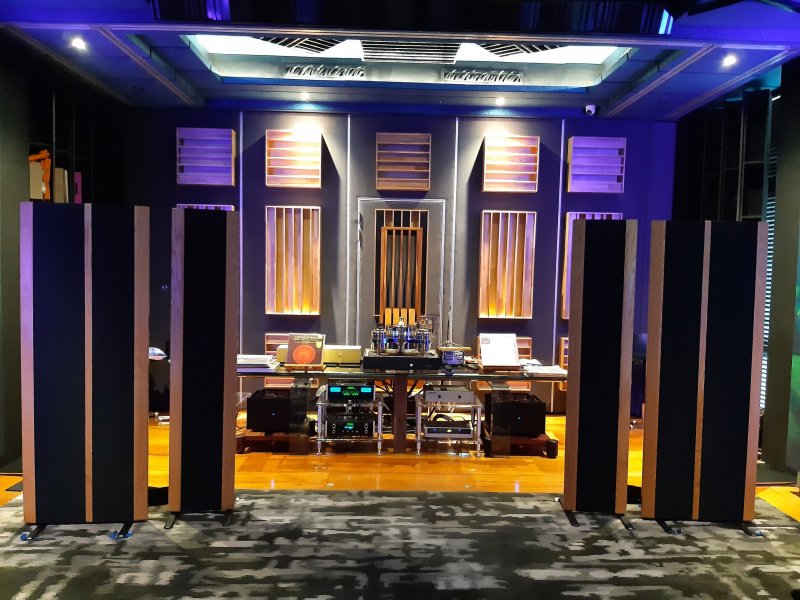
Next, I was struck by the terrific openness, transparency, and focus of the 30.7’s, from the lower midrange right on up to the highest treble frequencies. Stated simply, this speaker is a master of textural nuance, transient acuity, and dynamic expression. Through the Maggies, then, I found myself getting delightfully caught up (and then lost) in the delicate, expressive inflections of Lyn Stanley’s voice on ‘My Funny Valentine’ from the singer’s The Moonlight Sessions, Volume One[A.T. Music, 16/44.1]. Similarly, I was inexorably drawn into the variegated timbres and modes of attack as heard from trumpeter John Adler and pianist Tracy Cowden’s respective instruments on the title track of Adler’s Confronting Inertia[Origin Classical, 16/44.1]—a track that showcases many different trumpet and piano moods ranging from whisper-quiet musical comments to bold, powerful, and dynamically dramatic statements. Two qualities that impressed me throughout were the 30.7’s effortless sense of ultra-fine resolution and superabundant transient speed from top to bottom. It’s in these areas where the 30.7 proved itself not only to be the best Magnepan ever, but one of the finest loudspeakers available at any price.
Third, I was won over by the 30.7’s remarkable to convey sonic images and soundstages that are remarkably realistic in size and scale. This is a performance parameter where the 30.7’s handily outperform all but the largest, most capable, and typically most expensive dynamic driver-type loudspeakers. Part of this results from the 30.7’s uncommonly good power response throughout the listening space—something I was able to verify by walking around the listening space while observing the remarkable smoothness and evenness of the Maggies’ overall sound across multiple locations. Part is also attributable to the speaker’s sheer size; these are large, dipolar, linear array speakers whose drivers produce sound everywhere from a few inches to more than six feet above floor level. The result is a speaker that can produce realistically (but not exaggeratedly) tall, broad, and deep soundstages with a just-right degree of imaging specificity and focus.
ในขั้นตอนถัดไป ผมรู้สึกทึ่งกับความเปิดกว้าง ความโปร่งใส และความชัดเจนของรุ่น 30.7 ตั้งแต่ช่วงกลางต่ำไปจนถึงความถี่สูงสุดของเสียง โดยสามารถพูดได้ว่า ลำโพงนี้เป็นปรมาจารย์แห่งการจับรายละเอียดที่ละเอียดละออ ความเฉียบคมของการตอบสนอง และการแสดงอารมณ์แบบไดนามิก เมื่อฟังผ่าน Maggies ผมพบว่าตัวเองถูกดึงดูดเข้าไปในอารมณ์และความละเอียดอ่อนของเสียงร้อง Lyn Stanley ในเพลง ‘My Funny Valentine’ จากอัลบั้ม The Moonlight Sessions, Volume One [A.T. Music, 16/44.1] นอกจากนี้ ผมยังถูกดึงเข้าไปในเสียงที่หลากหลายและรูปแบบการโจมตีจากนักทรัมเป็ต John Adler และนักเปียโน Tracy Cowden ในเพลงชื่อเรื่องของอัลบั้ม Confronting Inertia [Origin Classical, 16/44.1] ซึ่งแสดงถึงอารมณ์ของทรัมเป็ตและเปียโนที่แตกต่างกันตั้งแต่เสียงกระซิบเงียบไปจนถึงคำพูดที่ชัดเจนและทรงพลัง
สองคุณสมบัติที่ทำให้ผมประทับใจตลอดเวลาคือ ความสามารถในการสร้างรายละเอียดเสียงที่ละเอียดแบบง่ายๆ และความเร็วในการเปลี่ยนแปลงที่มากมายในทุกช่วงเสียง ตั้งแต่สูงจนถึงต่ำ ในด้านเหล่านี้ รุ่น 30.7 แสดงให้เห็นถึงความเหนือชั้น ไม่เพียงแต่เป็นลำโพงที่ดีที่สุดของ Magnepan แต่ยังเป็นหนึ่งในลำโพงที่ดีที่สุดที่มีอยู่ในตลาดไม่ว่าจะอยู่ในราคาที่ไหน
ประการที่สาม รุ่น 30.7 มีความสามารถพิเศษในการสร้างภาพเสียงและฉากเสียงที่มีความเหมือนจริงในขนาดและเนื้อหา นี่]e/คือพารามิเตอร์ด้านประสิทธิภาพที่ 30.7 สามารถทำได้ดีกว่าลำโพงประเภทไดนามิกที่มีราคาแพงและมีขนาดใหญ่ที่สุดเพียงเล็กน้อยส่วนหนึ่งเกิดจากการตอบสนองพลังงานที่ดีอย่างไม่ธรรมดาของรุ่น 30.7 ทั่วทั้งพื้นที่ฟัง ซึ่งผมสามารถตรวจสอบได้โดยการเดินไปรอบๆ พื้นที่ฟังและสังเกตความเรียบและความสม่ำเสมอของเสียงโดยรวมจาก Maggies ในหลายๆ จุด นอกจากนี้ยังมีส่วนเกี่ยวข้องกับขนาดที่ใหญ่ของลำโพงซึ่งเป็นลำโพงแบบ dipolar ในรูปแบบ linear array ที่มีไดรเวอร์ผลิตเสียงได้ในระดับสูงตั้งแต่ไม่กี่นิ้วไปจนถึงมากกว่า 6 ฟุตเหนือระดับพื้น ผลที่ได้คือ ลำโพงนี้สามารถสร้างฉากเสียงที่มีขนาดใหญ่และลึกอย่างมีชีวิตชีวา (แต่ไม่เกินจริง) พร้อมกับการโฟกัสและความชัดเจนของภาพเสียงในระดับที่เหมาะสม

To appreciate what I mean, listen to the 30.7’s rendition of ‘Aphrodite’ from Robert Paterson’s The Book of Goddesses [America Modern Recordings, 16/44.1], which shows the Maya ensemble’s distinctive combination of flute, harp, and percussion instruments performing in a richly reverberant recording space. Through the Maggies, the instruments sound realistic (in timbre, dynamics, and overall scale) and so too does the space; it’s a true three-dimensional treat. Another great example would be the Jamey Haddad, Lenny White, and Mark Sherman percussion trio’s performance of the vibrant and intensely syncopated track ‘Stank’ from Explorations in Space and Time[Chesky, 16/44.1]. In this case, the listener hears the interplay of three master percussionists performing on a wide array of instruments as recorded in the interior of a church. The 30.7 renders each of the instruments’ voices with impressive purity and realism, but it’s the interaction of those voices with the acoustics of the church that invites the listener to suspend disbelief and be transported to the time and place where the recording was made.
เพื่อให้เข้าใจในสิ่งที่ผมกล่าวถึง ลองฟังการแสดงออกของรุ่น 30.7 ในเพลง ‘Aphrodite’ จากอัลบั้ม The Book of Goddesses ของ Robert Paterson [America Modern Recordings, 16/44.1] ซึ่งแสดงถึงการผสมผสานที่โดดเด่นของเครื่องดนตรีฟลูท, ฮาร์ป และเครื่องเคาะจังหวะ ของวง Maya ที่มีการบันทึกในพื้นที่ที่เสียงสะท้อนอย่างมีสีสัน ผ่าน Maggies แล้ว เครื่องดนตรีจะมีเสียงที่สมจริง (ในด้านเสียงทรีม, ไดนามิก, และขนาดโดยรวม) และพื้นที่ก็เช่นกัน; เป็นประสบการณ์เสียงที่มีมิติเสมือนจริง อีกตัวอย่างที่ดีคือการแสดงของกลุ่มเครื่องดนตรีสามคน Jamey Haddad, Lenny White, และ Mark Sherman ในแทรค ‘Stank’ จากอัลบั้ม Explorations in Space and Time [Chesky, 16/44.1] ในกรณีนี้ ผู้ฟังจะได้ยินการเล่นของสามนักเล่นเครื่องเคาะจังหวะที่มีความเชี่ยวชาญซึ่งเล่นเครื่องดนตรีหลายชนิด โดยบันทึกเสียงในภายในของโบสถ์ รุ่น 30.7 สามารถสร้างเสียงของเครื่องดนตรีแต่ละตัวด้วยความบริสุทธิ์และความสมจริงที่น่าประทับใจ แต่สิ่งที่น่าสนใจก็คือ การโต้ตอบของเสียงแต่ละเสียงกับเสียงสะท้อนภายในโบสถ์ ชวนให้ผู้ฟัง suspend disbelief และหลุดไปในเวลาและสถานที่ที่การบันทึกเกิดขึ้น
In practical terms, 30.7 ownership does entail a few caveats. First, the four-panel speaker is comparatively wide and will not fit in every room. Note, however, that it is possible to place the bass/lower-midrange panels directly against the sidewalls of the room with no adverse effects, meaning this speaker system could conceivably be used in rooms as narrow as about 13.5 feet in width. Second, the speaker requires careful set-up and adjustment in most rooms in order to sound its best. This isn’t a simple ‘set it and forget it’ design; instead, it takes time and patience to tease out its highest levels of performance. Third, this is a speaker that sounds best from a single, central listening position; move from that and the speaker’s uncanny three-dimensionality and imaging focus will fall off considerably. But sit in the middle seat and you will find your self in the centre of the sonic ‘promised land’.
Magnepan’s 30.7 is in my view a landmark design—one that does all things well and some things (textural and transient nuances, three-dimensionality, and realistic image scale) extraordinarily well. While $45,000 is a lot to pay for any pair of loudspeakers, the fact is that the 30.7’s deliver sound quality competitive with (and in some respects superior to) loudspeakers ranging from two to nearly ten times their price. This means the 30.7 is at once an expensive product that also offers exceptional value for money! If you have the chance, I urge you to hear Magnepan’s 30.7, if only to experience what a world-class $45,000 loudspeaker system can really do.
ในเชิงปฏิบัติ การเป็นเจ้าของรุ่น 30.7 มีข้อควรระวังบ้าง ประการแรก ลำโพงประเภทสี่แผ่นนี้มีขนาดกว้างมากและอาจไม่เหมาะสำหรับทุกห้อง อย่างไรก็ตาม ควรทราบว่ามีความเป็นไปได้ที่จะวางแผ่นเบส/กลางล่างไว้ชิดกับผนังด้านข้างของห้องโดยไม่มีผลเสีย ซึ่งหมายความว่าระบบลำโพงนี้สามารถใช้ในห้องที่มีความกว้างประมาณ 13.5 ฟุตได้ นอกจากนี้ ลำโพงนี้ต้องการการตั้งค่าและปรับแต่งอย่างละเอียดในหลายๆ ห้องเพื่อให้ได้เสียงที่ดีที่สุด นี่ไม่ใช่การออกแบบที่สามารถตั้งแล้วลืมไปได้; แทนที่มันใช้เวลาและความอดทนในการดึงเอาระดับประสิทธิภาพสูงสุดของลำโพงออกมา ประการที่สาม ลำโพงนี้ให้เสียงดีที่สุดจากตำแหน่งการฟังที่กลางๆ คือต้องนั่งในจุดที่กำหนด ถ้าย้ายออกจากจุดนั้น ความสามารถในการสร้างมิติและโฟกัสของเสียงจะลดลงอย่างมาก แต่ถ้านั่งในที่นั่งกลาง คุณจะพบว่าตัวเองอยู่ใน “ดินแดนที่สัญญา” ของเสียงที่น่าพอใจ
Magnepan 30.7 เป็นลำโพงที่ถือเป็นงานออกแบบระดับสำคัญ ในมุมมองของผู้เขียน เพราะสามารถถ่ายทอดเสียงได้ยอดเยี่ยมในทุกด้าน และโดดเด่นเป็นพิเศษในบางเรื่อง เช่น รายละเอียดพื้นผิวเสียง การตอบสนองความเปลี่ยนแปลงของเสียงอย่างแม่นยำ ความลึกของมิติ และขนาดของภาพเสียงที่สมจริง
แม้ว่าราคาที่ 45,000 ดอลลาร์จะเป็นจำนวนเงินที่สูงสำหรับลำโพงคู่หนึ่ง แต่ความจริงก็คือ 30.7 ให้คุณภาพเสียงที่สามารถแข่งขันได้ (และในบางด้านยังเหนือกว่า) ลำโพงที่มีราคาสูงกว่าถึงสองถึงสิบเท่า ซึ่งหมายความว่า แม้ 30.7 จะเป็นสินค้าระดับไฮเอนด์ แต่ก็มอบความคุ้มค่าได้อย่างน่าทึ่ง
หากคุณมีโอกาส ผู้เขียนขอแนะนำให้ลองฟัง Magnepan 30.7 สักครั้ง อย่างน้อยเพื่อสัมผัสว่าระบบลำโพงระดับโลกในช่วงราคา 45,000 ดอลลาร์สามารถทำอะไรได้บ้าง
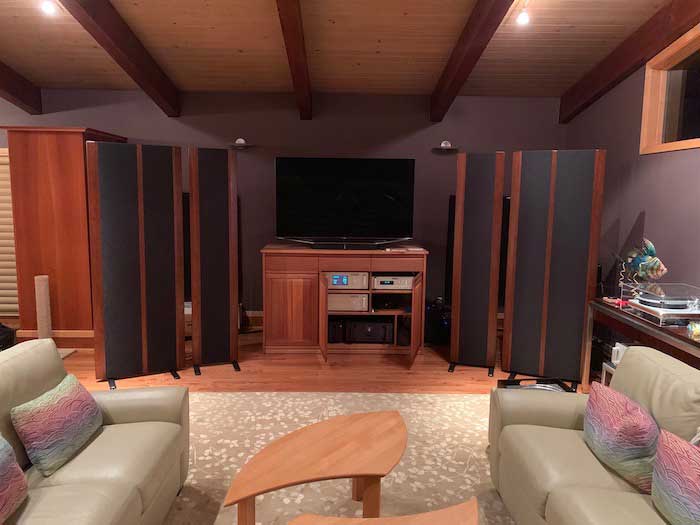
Does the 30.7i Require a Big Sound Room?
The ideal line source would be like a narrow pole—very narrow and from floor-to-ceiling (with no mass). With real-world materials, Maggies aspire to this ideal.
Imagine if we repacked the 30.7i tweeter/midrange in a 10 inch-wide panel and sold it with small dynamic woofers (that could be hidden). Such a hybrid would have all the problems that have plagued all hybrids, but there is no acoustical reason it would not work in a small room (the only issue would be aesthetics.)
However, the bass panels of all Maggies are big. The 30.7i bass panel is huge. And, yes, there is a acoustical problem with putting a big woofer in a small room: excessive midbass (deep bass is seldom a problem).
We have solved the problem of excessive midbass. The 30.7i has adjustable midbass control (in addtion to mid and high frequency adjustments). If you can handle the aesthetic issues of big panels, there are no acoustical reasons you can not have a 30.7i in a smaller room.
A word about setup: whether the tweeter is on the inside or outside, the tweeter should not be closer to the listener than the bass section. Measuring from your seated position, if the bass panel is 10 feet, 6 inches, the tweeter should be at least 10 feet, 7 inches (think in distance, not angles).
What is Power Response and why is it Important to Music Reproduction?
Wendell Diller, explains why Maggies have superior power response and how you can conduct this listening test at your local dealer in this video.
ลองนึกดูว่าถ้าเรานำทวีตเตอร์/มิดเรนจ์ 30.7i มาใส่ในแผงขนาดกว้าง 10 นิ้ว แล้วขายพร้อมวูฟเฟอร์ไดนามิกขนาดเล็ก (ที่สามารถซ่อนไว้ได้) ลำโพงไฮบริดดังกล่าวจะมีปัญหาทั้งหมดที่เคยเกิดขึ้นกับลำโพงไฮบริดทั้งหมด แต่ไม่มีเหตุผลด้านอะคูสติกที่ลำโพงรุ่นนี้จะใช้ไม่ได้ในห้องขนาดเล็ก (ปัญหาเดียวคือด้านสุนทรียศาสตร์)
อย่างไรก็ตาม แผงเบสของ Maggies ทุกตัวมีขนาดใหญ่ แผงเบส 30.7i นั้นมีขนาดใหญ่มาก และใช่แล้ว มีปัญหาด้านอะคูสติกเมื่อติดตั้งวูฟเฟอร์ขนาดใหญ่ในห้องขนาดเล็ก นั่นคือ มิดเบสที่มากเกินไป (เบสที่หนักแน่นมักไม่ใช่ปัญหา)
เราได้แก้ปัญหามิดเบสที่มากเกินไปแล้ว 30.7i มีการควบคุมเสียงกลางที่ปรับได้ (นอกเหนือจากการปรับความถี่กลางและความถี่สูง) หากคุณสามารถจัดการกับปัญหาด้านสุนทรียศาสตร์ของแผงขนาดใหญ่ได้ ก็ไม่มีเหตุผลด้านเสียงที่คุณจะไม่สามารถติดตั้ง 30.7i ในห้องขนาดเล็กได้
คำแนะนำเกี่ยวกับการติดตั้ง: ไม่ว่าทวีตเตอร์จะอยู่ภายในหรือภายนอก ทวีตเตอร์ก็ไม่ควรอยู่ใกล้กับผู้ฟังมากกว่าส่วนเสียงเบส เมื่อวัดจากตำแหน่งที่นั่งของคุณ หากแผงเสียงเบสมีความยาว 10 ฟุต 6 นิ้ว ทวีตเตอร์ควรมีความยาวอย่างน้อย 10 ฟุต 7 นิ้ว (ลองคิดในระยะทาง ไม่ใช่ในมุม)
การตอบสนองกำลังคืออะไร และเหตุใดจึงมีความสำคัญต่อการสร้างเสียงเพลง
Wendell Diller อธิบายว่าทำไม Maggies ถึงมีการตอบสนองกำลังที่เหนือกว่า และคุณสามารถทำการทดสอบการฟังนี้ที่ตัวแทนจำหน่ายในพื้นที่ของคุณได้อย่างไรในวิดีโอนี้
Magnepan MG30.7i X
หากต้องการข้อมูลเพิ่มเติมเกี่ยวกับซีรีส์ ‘X’ โปรดคลิกที่นี่
คุณสามารถดูรายชื่อตัวแทนจำหน่ายทั้งหมดได้โดยคลิกที่นี่
TECHNICAL SPECIFICATIONS
- Type: Four-way, four-panel, quasi-ribbon/pure-ribbon dipolar planar loudspeaker (each speaker includes a large bass/lower-midrange panel and a smaller midrange/tweeter panel)
- Driver complement (per speaker): two quasi-ribbon bass drivers, one quasi-ribbon ‘transitional line source’ lower-midrange driver, one quasi-ribbon midrange driver with ultra-low-mass diaphragm, and one pure-ribbon high frequency driver.
- Frequency response: 20Hz–40kHz
- Impedance: 4 Ohms
- Dimensions (H×W×D): 200.7 ×73.7×5.2 cm, bass/lower-midrange panel; 200.7 x 36.8 x 5.2 cm, midrange/tweeter panel
Finishes:
- Frame: Wood: Natural or black solid oak, dark cherry
Aluminium: Silver, Black, Red, or Blue. - Fabric: Off-white, black, and dark grey
Trim Options


Product Manuals MG30.7i |


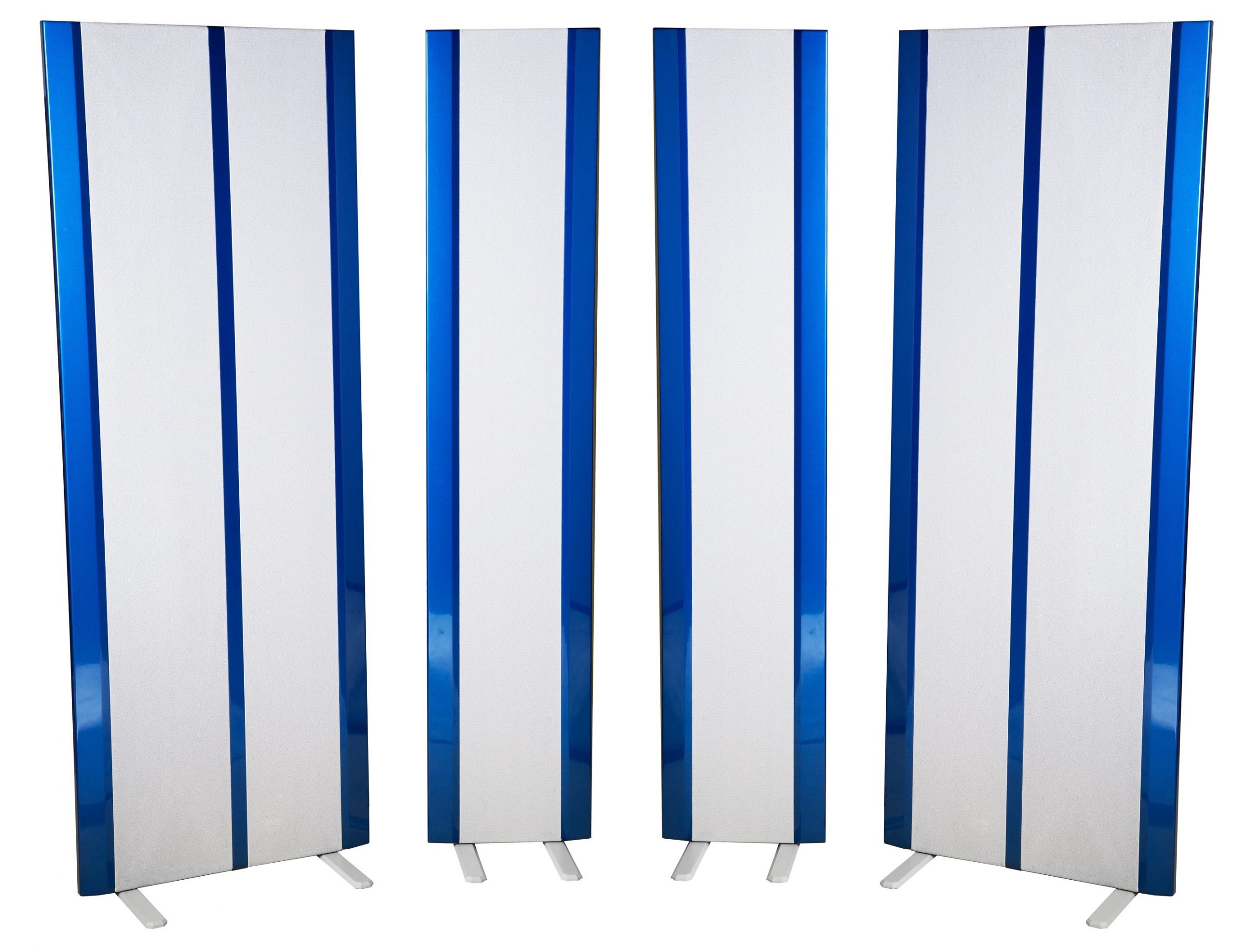
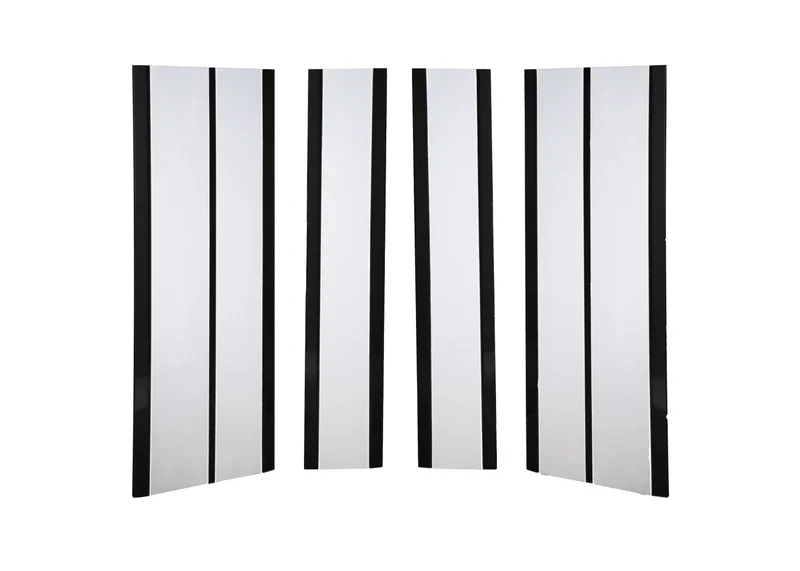
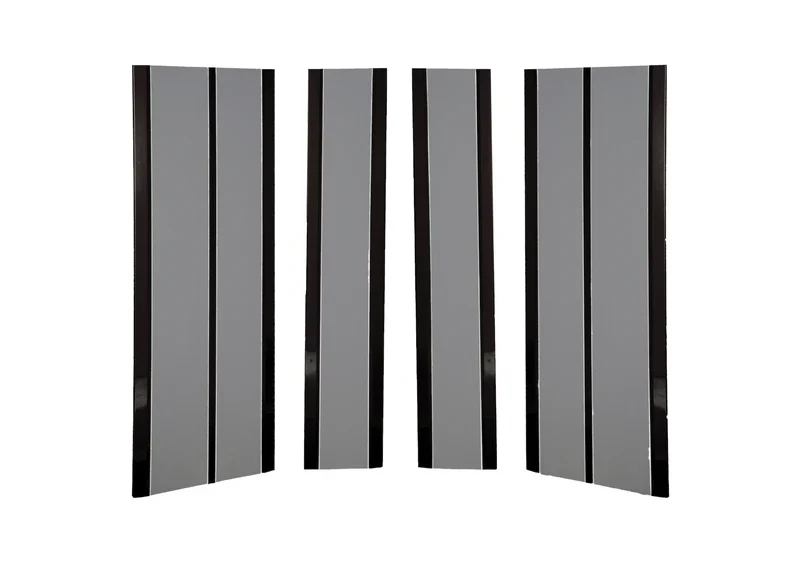
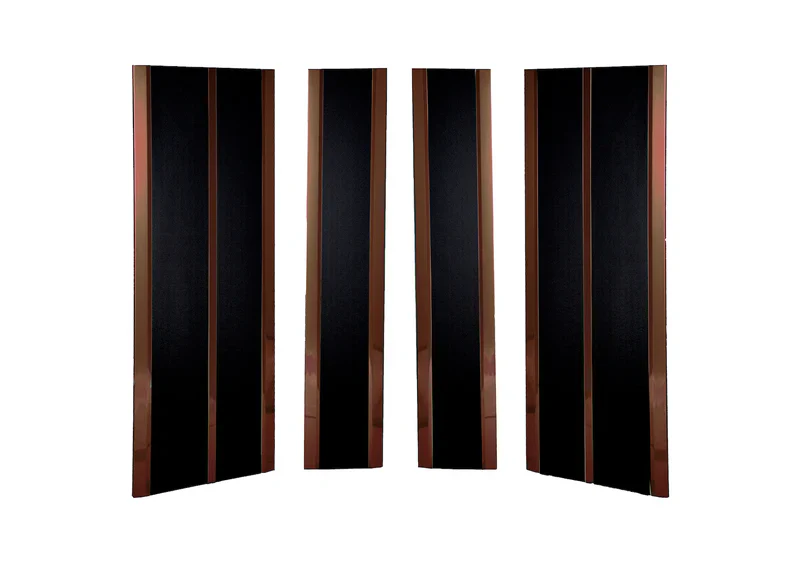
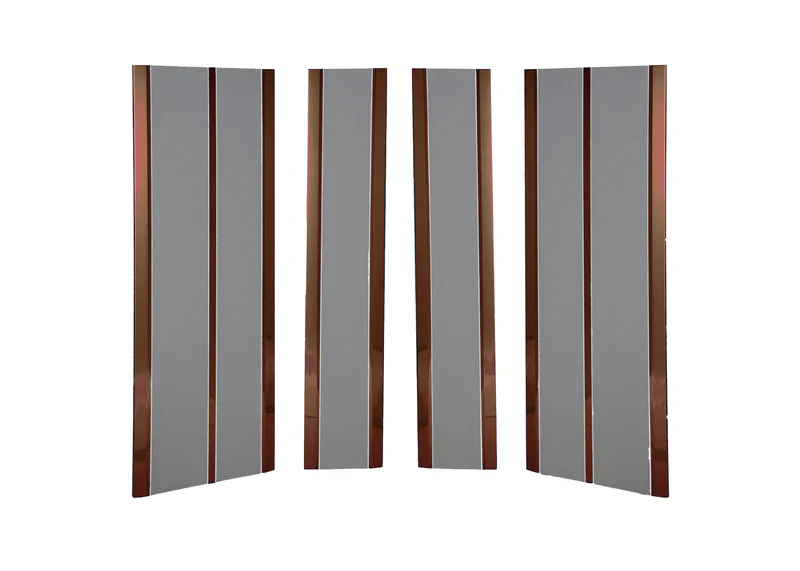
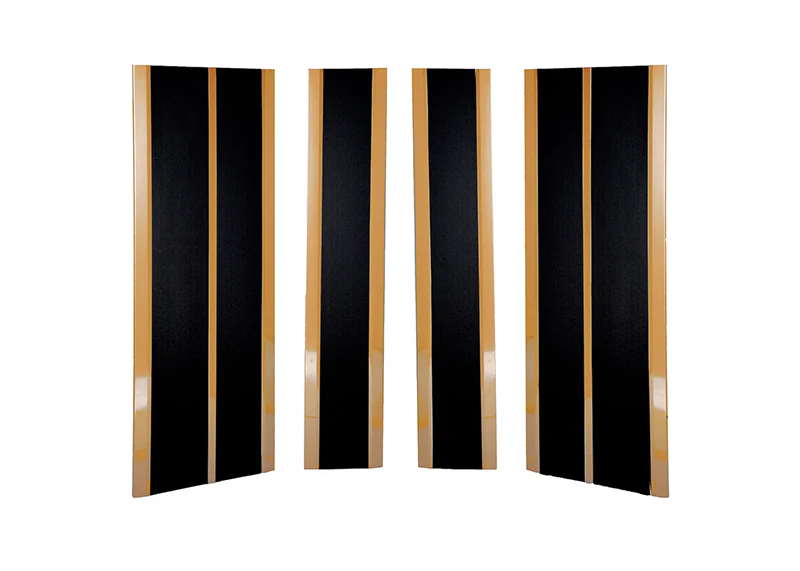
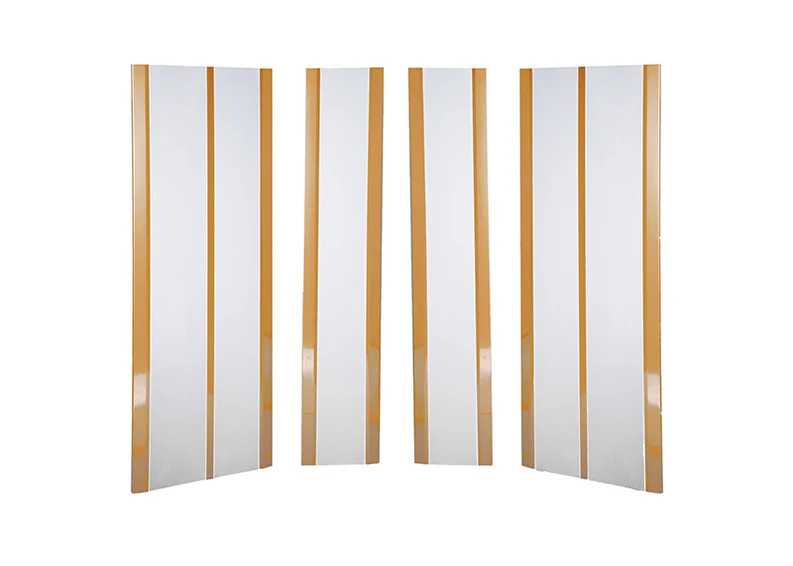
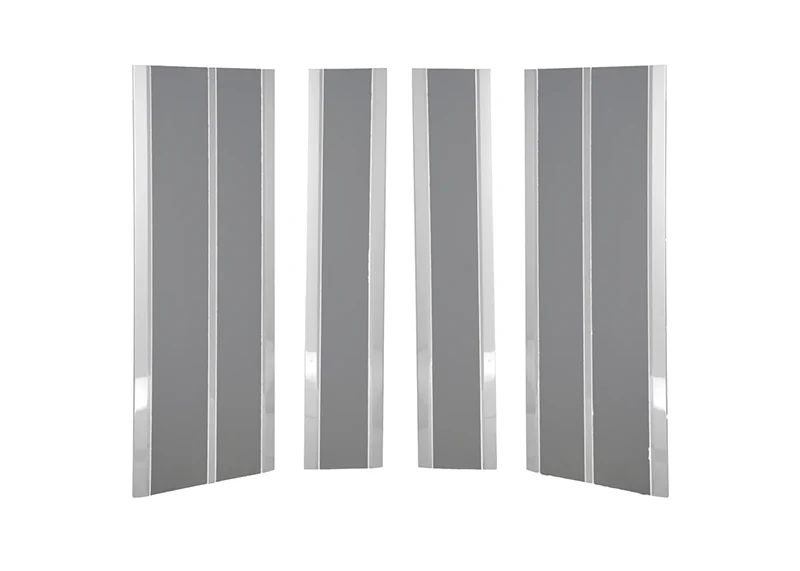
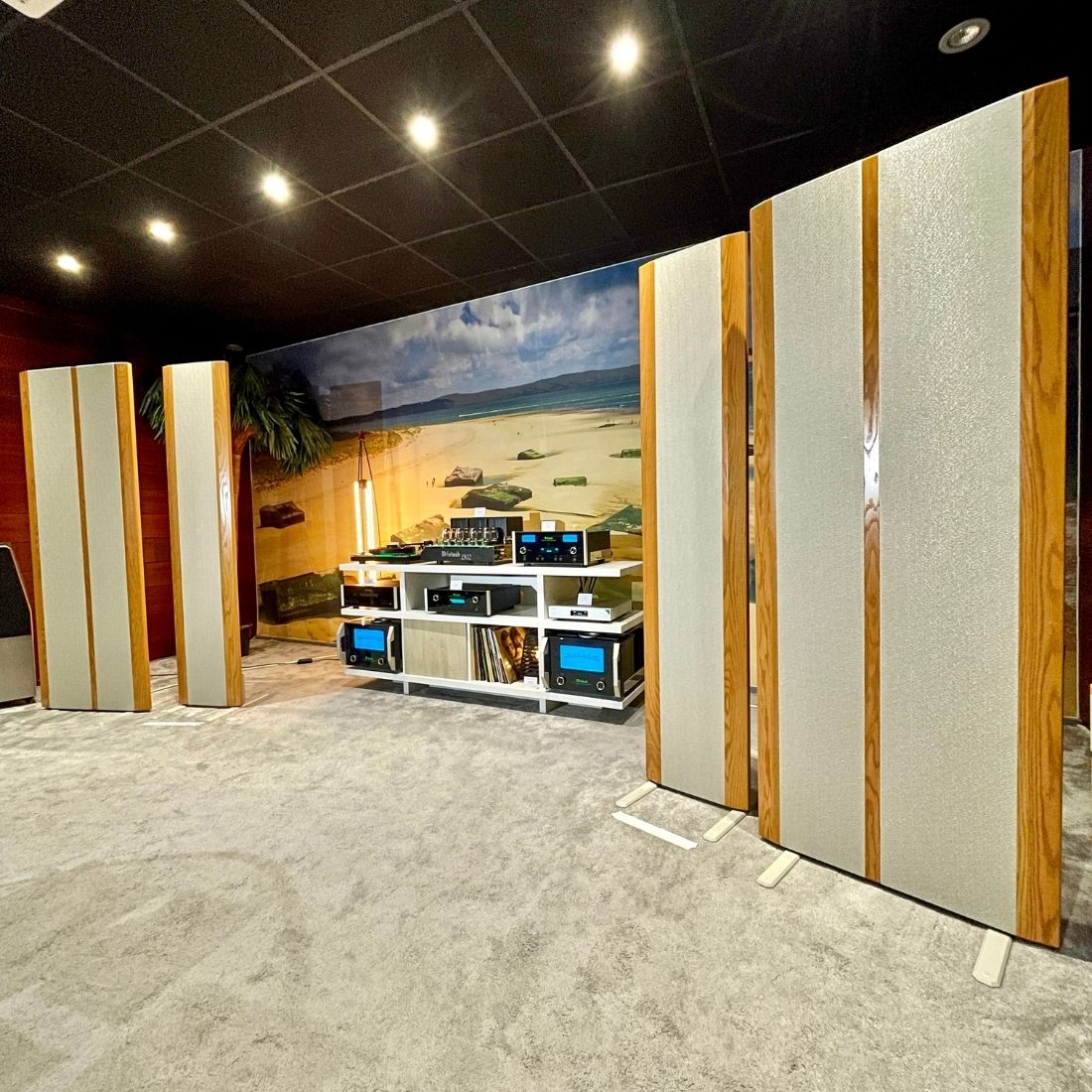
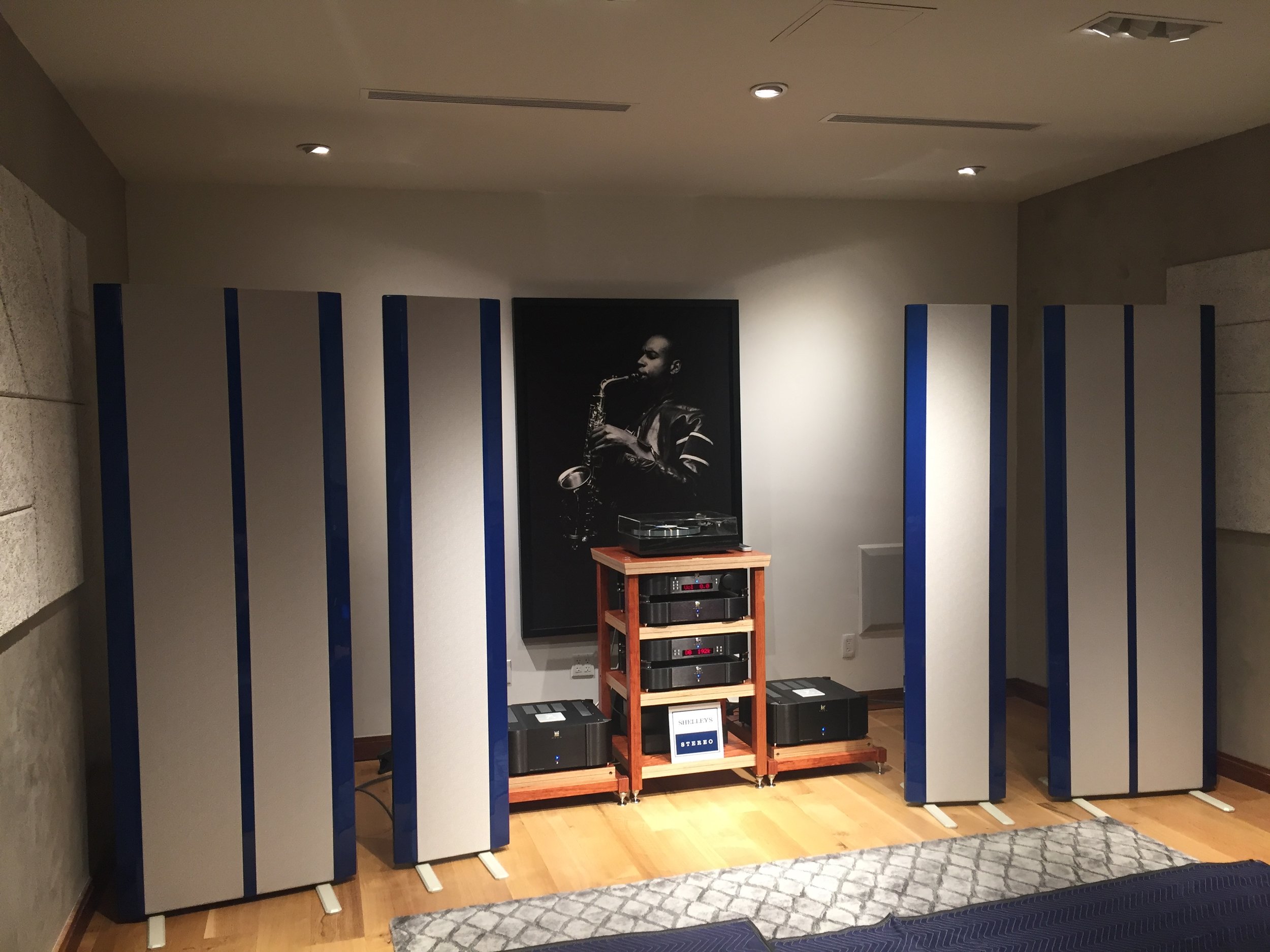
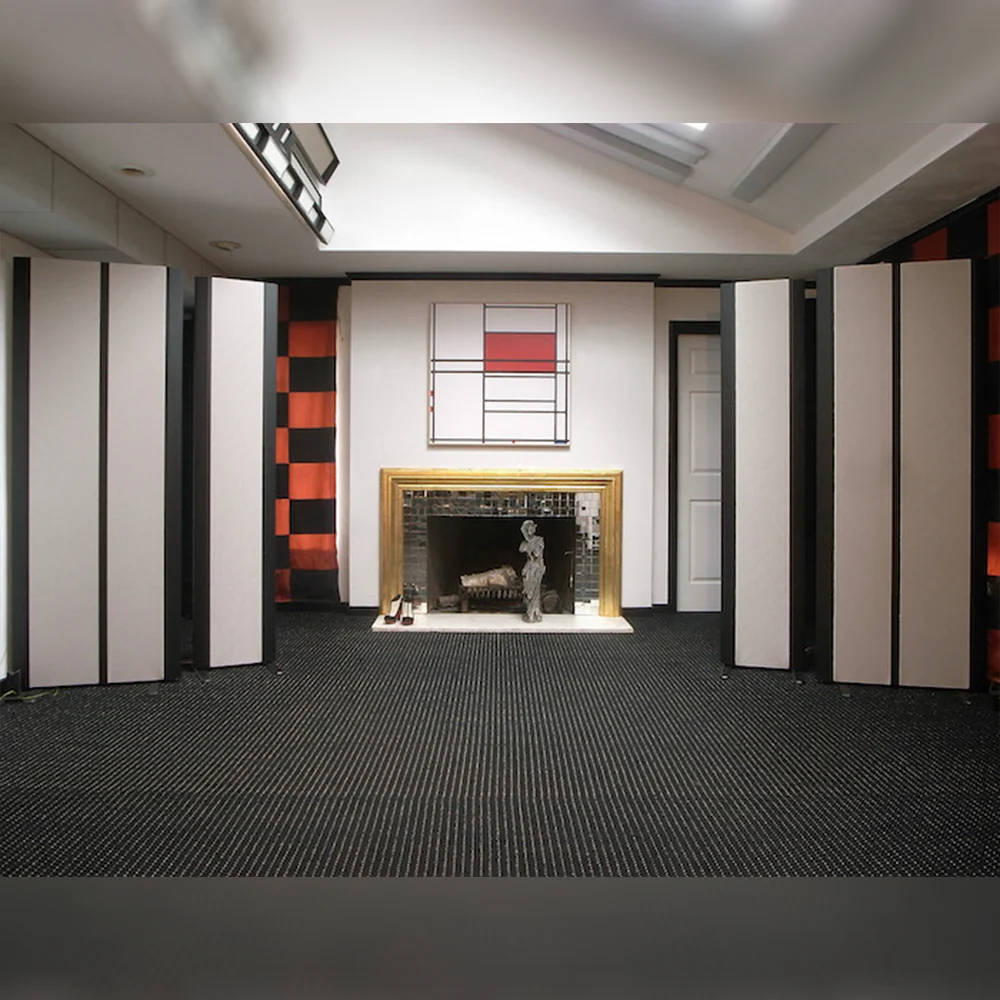
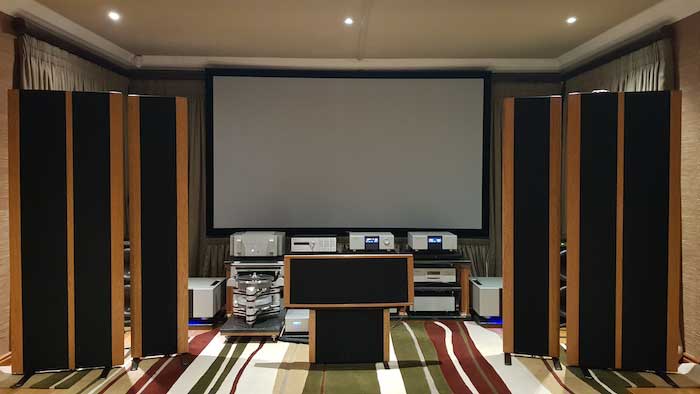
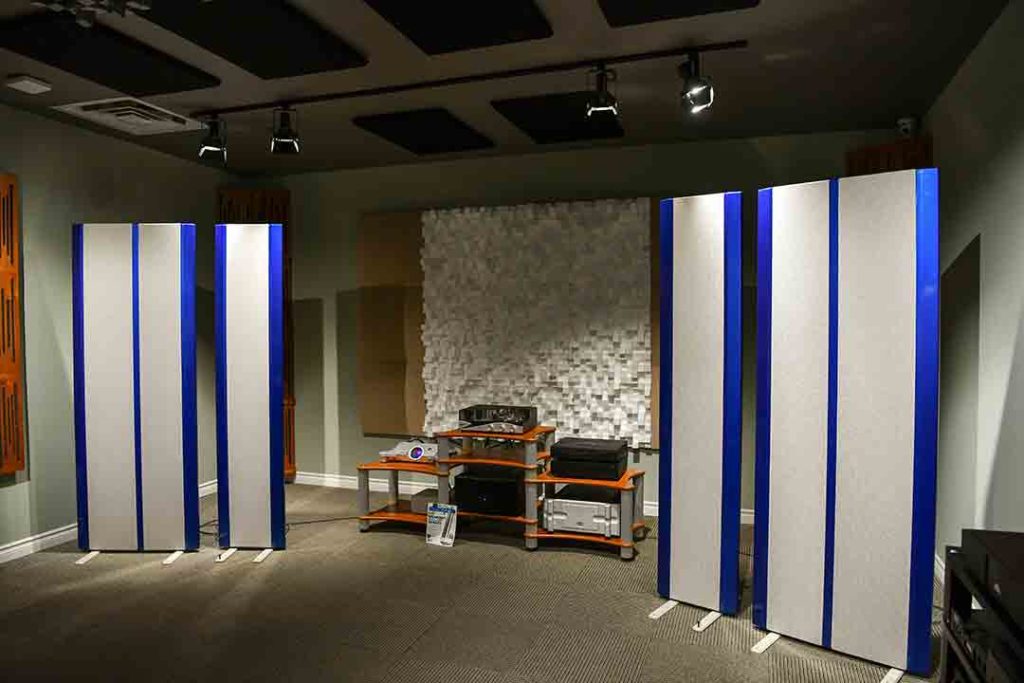
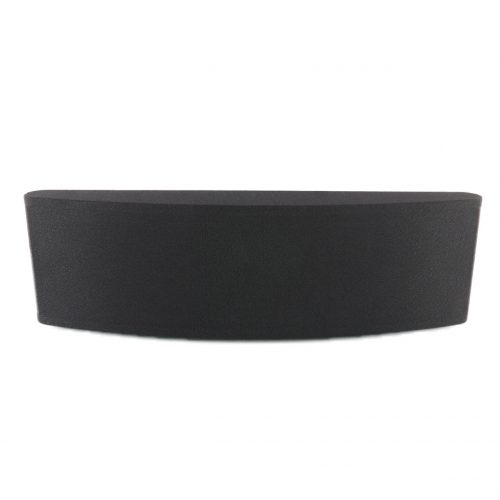
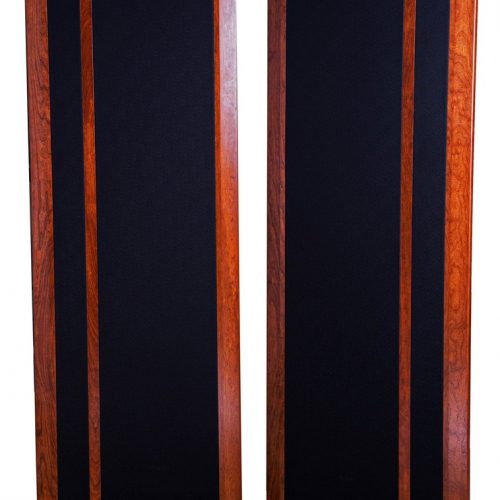
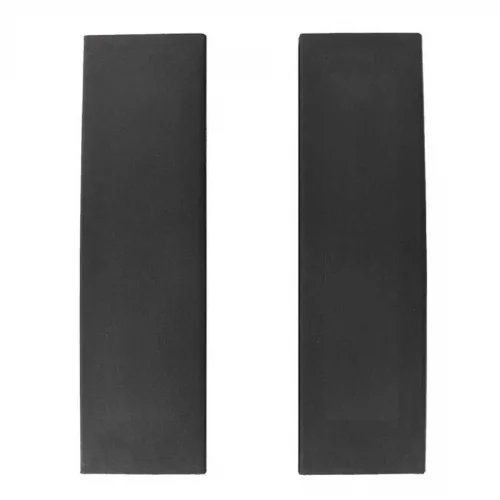
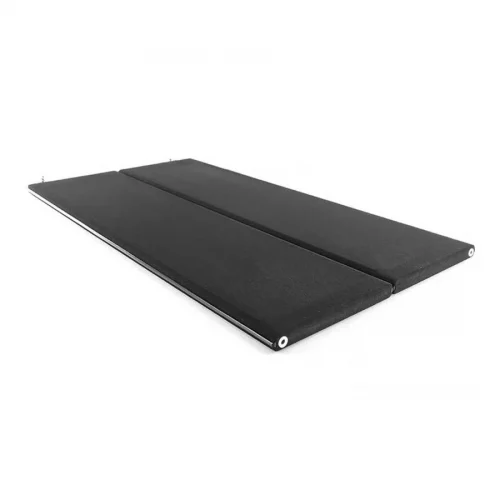
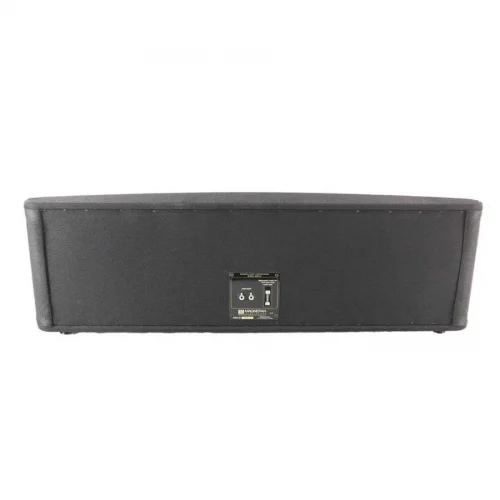
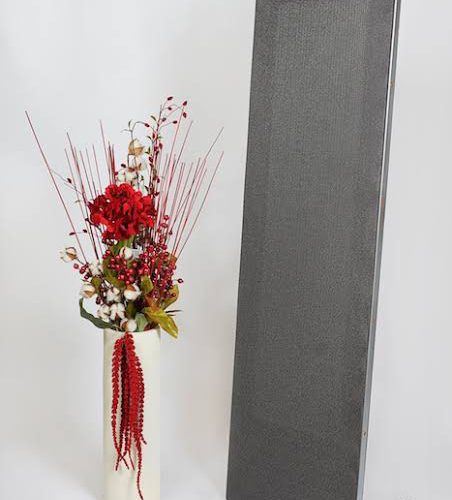
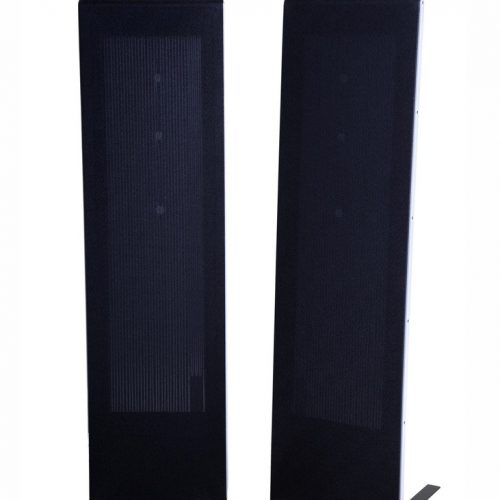
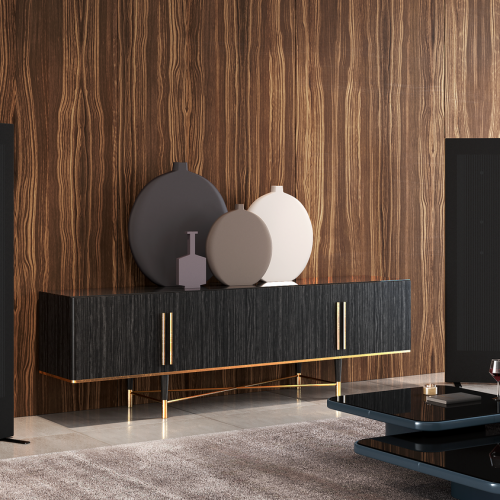
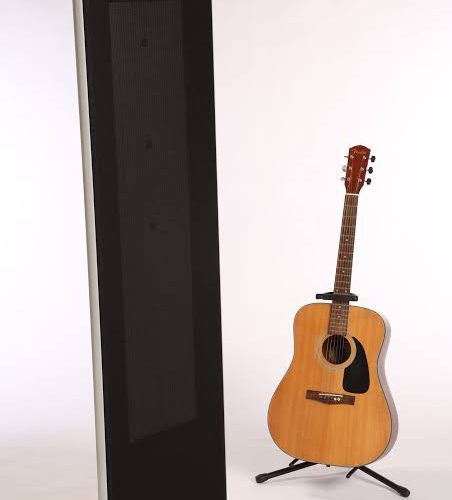

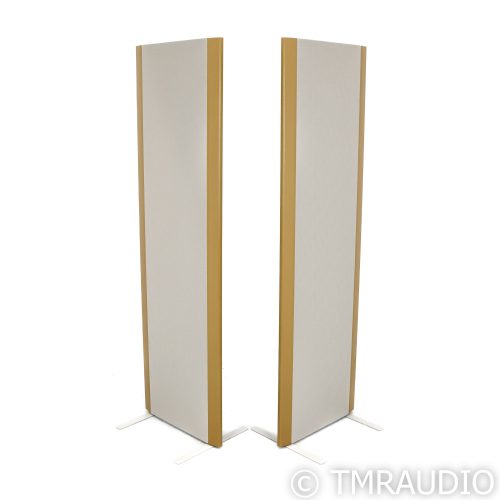
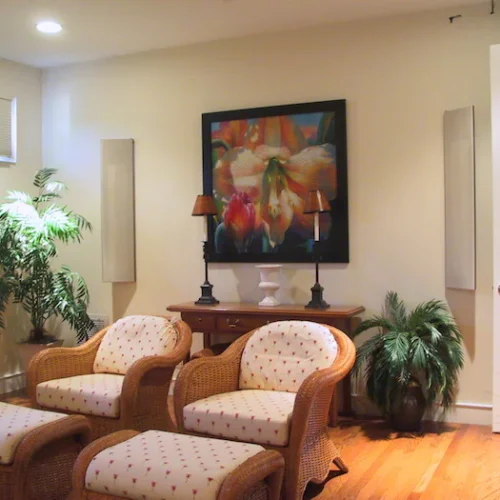
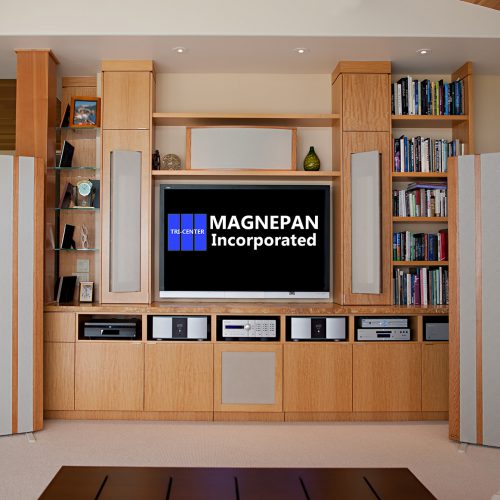
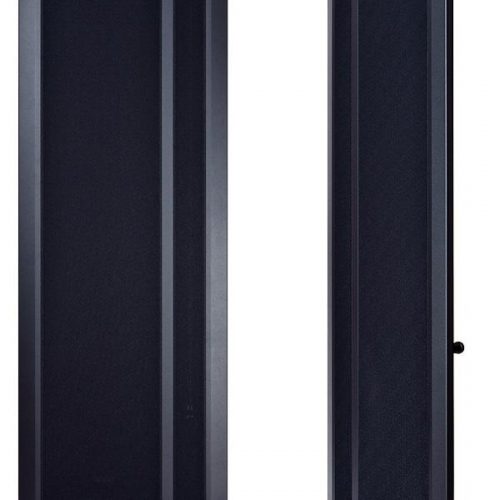
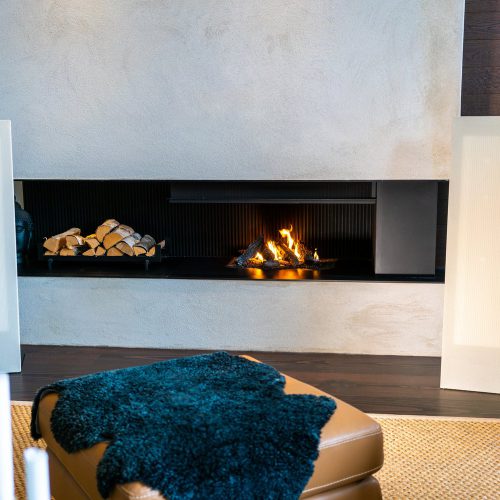
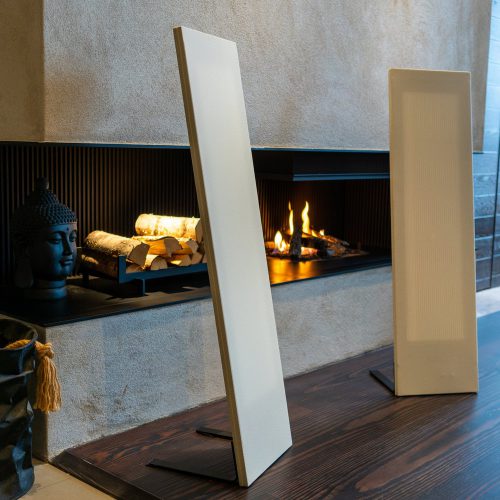


save-av.com –
Reviews
2018 Editors’ Choice, The Absolute Sound, March 2018
“Overall Product of the Year” (along with the $685,000 Wilson WAMM Master Chronosonic) in The Absolute Sound magazine (January issue 279, 2018). Part One and Part Two of the review.
“The 30.7 strikes me as a remarkable design achievement; it takes everything we have ever liked about the Magnepan sound to a whole different level—a level where both the richness and realism of recorded music are raised to extraordinary levels” – The Absolute Sound
“The fact is that the 30.7s deliver sound quality competitive with (and in some respects superior to) loudspeakers ranging from two to nearly ten times their price” – Hifiplus
Magnepan’s Ultra High-End 30.7 Magneplanar Loudspeaker – Widescreen Review